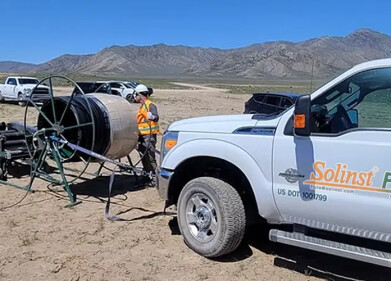Business News
What Exactly Is the Paris Agreement?
Nov 09 2016
Climate change is becoming an ever-increasing concern for governments and individuals all over the world. Last December, leaders of 193 nations from all over the globe met in Paris to put in place a framework of objectives regarding these political and environmental hot potato.
In the wake of news in September that both the USA and China have ratified the Paris COP21 agreement, it seems like a timely moment to examine exactly what the agreement consists of in closer detail, as well as elaborating on why the American and Chinese ratifications are such a big deal in global terms.
What is the COP21 agreement?
The gathering was the 21st Conference of the Parties to the UN Framework Convention on Climate Change, or COP21 for short. Fundamentally, it was one of the most comprehensive collections of world leaders that has ever happened throughout history.
Its objectives were clear – to finalise the wording of an agreement between all world nations to curb a global rise in temperatures to a maximum of 2°C and ideally beneath 1.5°C. This target will be met by all nations of the world making a concerted effort to reduce their carbon footprint and bring harmful emissions under control, thus limiting the potentially devastating effects of climate change.
What this means in practical terms varies from country to country. For example:
- The EU pledged to bring down carbon emissions by 40% from 1990 levels before 2030
- The USA has promised to cut its emissions by 26-28% before 2025 compared with 2005 levels
- China plans to reach peak emissions before 2030 and to increase clean forms of energy generation to 20% of total production by the same year
While the specific targets and promises may vary around the world, the COP21 agreement signalled one thing that all nations can agree upon - the time for action is now.
What does ratification of the agreement mean?
Though 193 nations signed the agreement back in December 2015, it must still be ratified. This means that the world leaders who gathered in Paris must go back to their own governments and gain domestic approval to join it.
For the agreement to come into effect, it must be ratified (or joined) by a minimum of 55 parties which are responsible for a minimum of 55% of all emissions globally. When China and the US both ratified the agreement in September 2016, this gave a significant boost towards those targets due to the fact that they are the number one and two biggest polluters, respectively.
Leading by example
To put that into context, only 24 parties (representing approximately 1% of total emissions) had joined the agreement prior to their ratification. However, China has long had a poor record in terms of environmental policy and is currently responsible for 20.09% of all emissions. Fortunately, the nation seems to have entered a new era in air quality monitoring and is making sweeping changes in order to meet its target.
Meanwhile, the US is the second biggest offender, responsible for 17.89% of emissions. Therefore, the ratification of the two countries meant that the percentage of polluters leapt up to 39.06% and put pressure on other major culprits to join the agreement as well.
In the wake of that announcement, the EU, Canada and Brazil have all pledged themselves to the agreement, though other big polluting nations such as Japan, Australia and the UK are yet to commit. With any luck, they will do so in the not-too-distant future (regardless of Brexit or other political issues) and world leaders can set about the serious business of limiting climate change, once and for all.
Digital Edition
AET 28.4 Oct/Nov 2024
November 2024
Gas Detection - Go from lagging to leading: why investment in gas detection makes sense Air Monitoring - Swirl and vortex meters will aid green hydrogen production - Beyond the Stack: Emi...
View all digital editions
Events
Jan 12 2025 Abu Dhabi, UAE
Jan 14 2025 Abu Dhabi, UAE
Jan 20 2025 San Diego, CA, USA
Carrefour des Gestions Locales de L'eau
Jan 22 2025 Rennes, France
Safety, Health & Wellbeing LIVE
Jan 22 2025 Manchester, UK



















